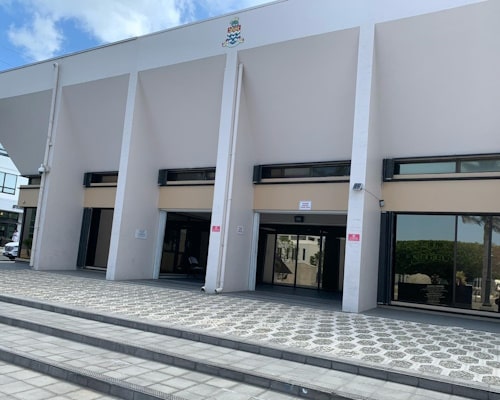CUC opens grid for another 3MW of renewables
(CNS): As Cayman continues its painstakingly slow adoption of renewable energy, OfReg has cleared the release of three more megawatts of power for CUC’s CORE and DER Programmes, which allow customers to connect their solar and wind-generated power to CUC’s grid. While it is only a fraction of the power consumed each day, it was described by OfReg as an initial release for 2023.
A recent CUC study found that more renewable energy will not have a negative impact on the fuel efficiency of its existing generators at the current price of oil. In addition to CUC’s study on whether or not it could manage more renewables from customers, OfReg began a study late last year on solar power in general, but that study is still in progress.
Following this release for the CORE and DER Programmes from 1 March, OfReg said it anticipates further general capacity allocation and new distributed renewable generation programme development to fill another 6MW of capacity this year. All of this is expected before CUC’s 20MW Battery Energy Storage System (BESS) is up and running, which should move the amount of electricity Grand Cayman consumes that is generated from green sources to a more significant level.
The extension of the CORE Programme will continue to be limited in capacity, with established tariff rates of CI$0.175 per kilowatt-hour for solar PV systems 5kW and below, and a FIT rate of CI$0.15/kWh for systems between 5kW and 10kW. The size of any individual consumer system is still restricted to the normal kW peak load of the consumer if less than 10 kW. The DER Programme provides opportunities for system sizes up to 250 kW, or the normal kW peak load of the consumer, whichever is less.
CUC President and CEO Richard Hew said the programmes are popular with both residential and commercial customers.
“We anticipate that the extension to these programmes will be rapidly taken up by our customers and will assist in our goal of reducing the Cayman Islands’ dependence on fossil fuels,” he said in a press release. “In advance of the commercial operation of the planned 20MW Battery Energy Storage System, which is anticipated to support further deployment of intermittent renewable resources to the grid, CUC conducted an incremental distributed solar study.”
He added that this was to ensure the benefits of releasing increased solar capacity, within grid technical limits, outweighed the operational costs and constraints of managing additional intermittent generation. “Our company remains committed to promoting and developing renewable energy as a source of electricity generation and we believe that programmes including but not limited to CORE and DER demonstrate that commitment,” Hew stated.
Interim OfReg CEO Peter Gough said the regulator would continue to develop a plan to release the remaining capacity to achieve the 29MW limit for renewables and would announce details around June.
The CORE and DER Programmes take into consideration the long-term goals of the National Energy Policy and the Integrated Resource Plan and are designed to incentivize consumers to generate energy from renewable sources. The programmes allow customers to connect renewable energy systems, such as small-scale solar systems or wind turbines, to CUC’s distribution system and to reduce their monthly energy bills by generating their own electricity while remaining connected to the CUC grid.
The CORE Credit and Interconnection Agreement and the DER Excess Energy Sale and Interconnection Agreement between the consumer and CUC will set out the terms under which services, connectivity, metering and billing credits will be governed. The agreements, which also act as the method by which customers apply, will be released on CUC’s website on 1 March.
- Fascinated
- Happy
- Sad
- Angry
- Bored
- Afraid
Category: Energy, Local News, Science & Nature, Utilities





































Spin zone activated a day after announcing windfall profits
so i consume about 5kw of electricity from cuc at approx .32.per kwh all in with fuel etc. i set up solar on my house, sell it all to cuc at .17 per kwh and by back what i consume from the grid at full price .approx 32 per kwh?
and i cant install more solar to off set my loss?
something wrong here or am i confused?
Technically you could install a second grid isolated panel for solar powered circuits only. Your isolated panel might be for circuits like lights, some small appliances and receptacles. The balance of circuits would still be connected to your main panel which CUC still supplies. This way you use what you produce and CUC can’t do a thing about it. I know some that have done this, it may not be practical in your case it’s doable.
As far a I know you are correct. Seems to be a scam. Everywhere else i know of is net metered so you’re only paying for the difference in what you consume vs what you produce. But for whatever reason here you still have to pay the full price of your consumption and then sell back you produced power. Granted there is a subsidy on the sale rate but you still get screwed on charges for fuel that as far as I can tell you didn’t actually use.
But you did use it. (Since you drew in the power.) And the cost/payment difference is to pay for the power lines the solar runs back out through to CUC (and then along to the CUC customer using it).
Now whether that is fairer than net metering I am not going to try to argue.
I guess that’s true but then I suppose the question is WHY did I have to use it?
If the sun is shining and powering my AC or whatever why do we have to burn a gallon of diesel and transmit it to my house instead of just drawing from the array on the roof?
I’m not an expert in it but it just seems silly
That sound like a question for your solar installation company.
Possibly related to the cost of a house battery to ‘smooth’ the supply of power from the solar panel to the A/C. That way the solar would get used first and you only use CUC when you don’t have enough solar. But because of the cost its easier/cheaper to just dump all of your solar into the grid then draw all of your needs out of the grid. So now we’re back to a net metering vs CORE argument.
These aren’t technical issues, i.e., ‘have to’, they are economic issues, i.e., ‘it is more financially viable to’.
Why is planning stopping people from producing and storing their own electricity with batteries? Planning will not approve solar unless it is grid-tied. What a way to protect the CUC cartel.
Ask PACT
You wouldn’t need a power company if you used solar
Agree 100%, that is why I passed on installing solar on my house and instead made it as energy efficient as possible.
3MW of public solar equates to about 15 acres of rooftop. That’s a pittance. Maybe 50 residential houses. If taken up, this will add 3/114MW need = 2.6% of peak total energy consumption. CUC will pay $0.000175 per watt, against CUC’s own re-invoiced solar installation cost of >$20 per watt. Consumer panel break even still out to 10-20 years, since some of the power is consumed on site and not contributed to the grid. It’s clear who’s side OfReg are on. It’s not consumers.
I don’t think you understand how any of this actually works…
please explain.
Okay, so let’s say that installing solar is in the vicinity of $2.25/watt (DC) these days. You go and install a 1.2 DC:AC system, which is fairly normal, for 5kW AC to keep the $0.175/kWh rate in CORE. The system will be $13,500, all in. You have a nice, southern roof with no shading so expect a capacity factor of maybe 20%. The system will degrade at roughly 0.5% per annum. Over your 25-year CORE contract, you will produce in the range of 206,350 kWh. At $0.175, you’ll be paid $36,111.27. Your payback is reached in Year 9, so the $22,611.27 from Years 9-25 is profit and you have an overall IRR of 8.34%. Pretty good deal. Better than investing in CUC stock, comparatively.
From the other side of the coin, CUC buys all your energy at the rate noted. That energy is then sold to all of the rest of us embedded in the Renewable Energy kWh billing line item at cost. CUC makes $0 profit, collectively we all pay for your $0.175/kWh solar, and that’s basically how it works. At the same time, that same amount of energy didn’t have to be produced by diesel generation. So if the rate for diesel is higher that $0.175/kWh at the time, we all save a little money. If it’s lower, we all lose a little money because your solar was more expensive. (This is a simplification, but it’s close enough.) Down the road, if there are big solar farms with energy in the $0.05-0.10 or lower range, then your $0.175 solar will just be more expensive than alternative solar meaning we all pay more on our bills so you can get your return on your personal solar system, rather than us paying less, but some return going to whomever owns the big solar farm.
To one of the other comments in that post, CUC doesn’t have a solar installation (it was originally owned by Entropy and then bought out by BMR) so this whole $20/watt nonsense is literally just that. That energy works the same way. CUC buys it, and then resells it at the exact same amount. It’s very clear in the quarterly and annual reports issued. The renewable energy revenues and expenses are literally the same amount.
Pie in the sky. You can’t go solar for $13,000. Try twice that much. Degrade at 0.5% a year? Says who? You’ll be lucky to get 10 years out of it in this climate.
Twice that cost gets you twice the system size. Just looked at a quote the other day for a lower price per watt than quoted.
0.5% is pretty typical for performance warranty with modern panels.
Plenty of systems still going strong post 10-years, and that was with technology and material quality 10 years ago.
Thank you, very useful